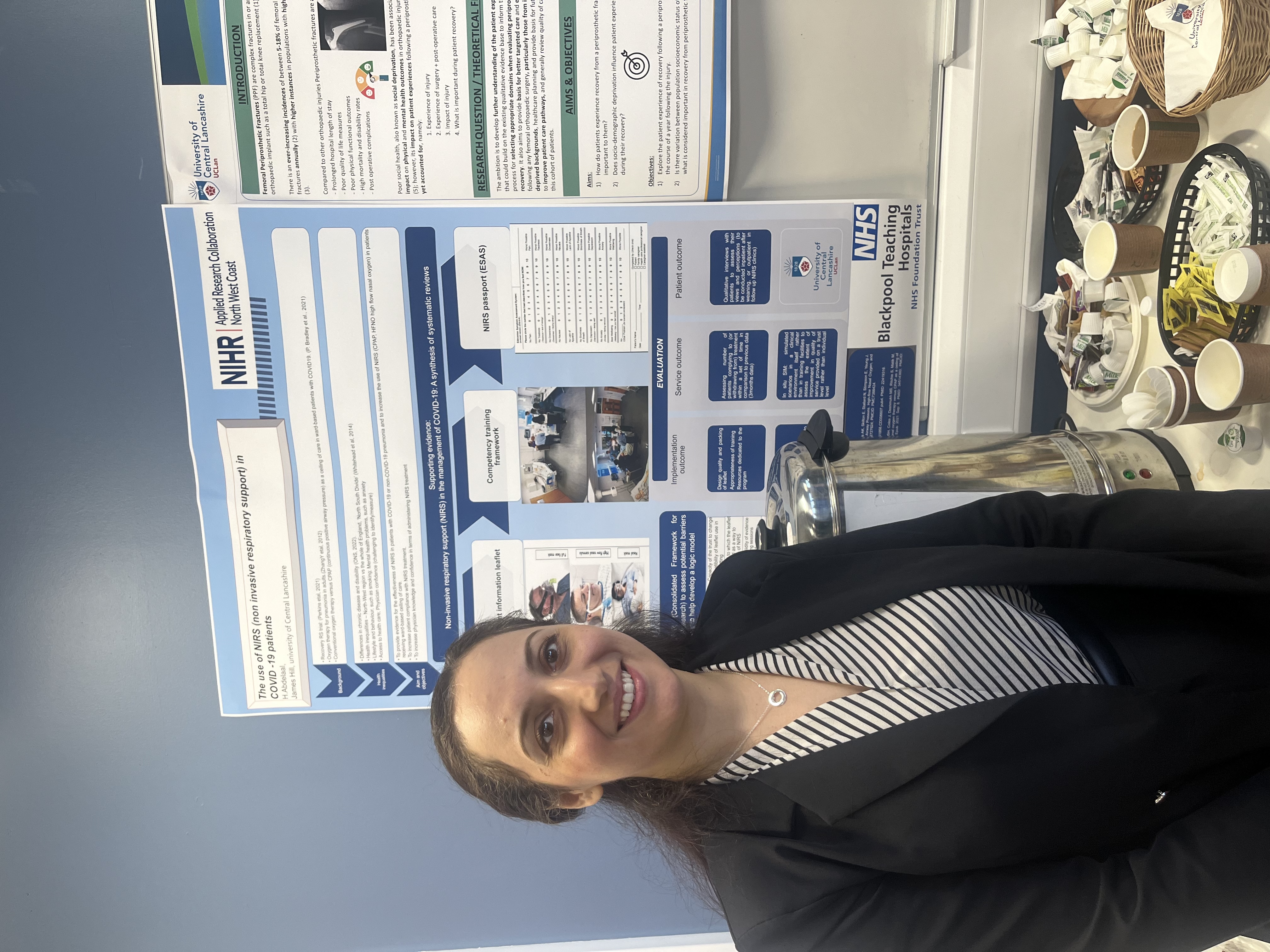Non-invasive respiratory support (NIRS) in COVID-19 patients
Hebatalla Abdelaal – Respiratory Specialist Registrar, Blackpool Teaching Hospitals NHS Foundation Trust

Rapid Conversion Evidence Summary (RaCES) Internship with the Person-Centred Complex Care (PCCC) theme
Background: Patients who are hospitalised with COVID-19 often require oxygen. Non-invasive respiratory support (NIRS) may be used as a clinical alternative to mechanical ventilation. Examples of NIRS include high-flow nasal oxygen (HFNO), bi-level positive airway pressure (BiPAP) or continuous positive airway pressure (CPAP). It is important that staff are knowledgeable about the current evidence for NIRS, including the benefits and risks of its use. This is also useful for patients so they can make informed decisions about continuing with NIRS. Health inequalities exist in this region with a greater proportion of respiratory disease-related deaths occurring in the North West of England compared with the whole of England (ONS, 2022).
Research aims and objectives:
• To provide evidence for the effectiveness of NIRS in patients with COVID-19 or non-COVID-19 pneumonia, and to increase the use of NIRS (CPAP, HFNO high flow nasal oxygen) in patients receiving ward-based ceiling of care,
• To increase patient compliance with NIRS treatment,
• To increase physician knowledge and confidence in terms of administering NIRS treatment.
Methods: Three systematic reviews on NIRS for patients with COVID-19 were critically appraised and the findings summarised. These systematic reviews were the RECOVERY respiratory support trial (Perkins et al., 2021), Oxygen therapy for pneumonia in adults (Zhang et al., 2012), and Conventional oxygen therapy versus continuous positive airway pressure (CPAP) in ward-based patients with COVID-19 (Bradley et al., 2021). Each of the three systematic reviews were critically appraised on their methodological quality using the Joanna Briggs Institutes’ checklist for systematic reviews tool. The findings from each review were then summarised and considered in relation to clinical practice.
Findings: Patients with COVID-19 are treated with NIRS, but failure rates of this are high. There is little difference in success of different modes of NIRS (HFNO, BiPAP, CPAP). Close monitoring of patients on NIRS is recommended. Further research is needed to assess how effective NIRS is in comparison to oxygen therapy.
Potential impact: This evidence has been used to inform the development of a patient information leaflet about NIRS. Further work around staff training on NIRS and a non-invasive ventilation patient passport is ongoing.
Links:
• ARC NWC Internship Showcase Poster
• Publication – Non-invasive respiratory support in the management of COVID-19: a synthesis of systematic reviews
For more information, contact hebatalla.abdelaal@nhs.net